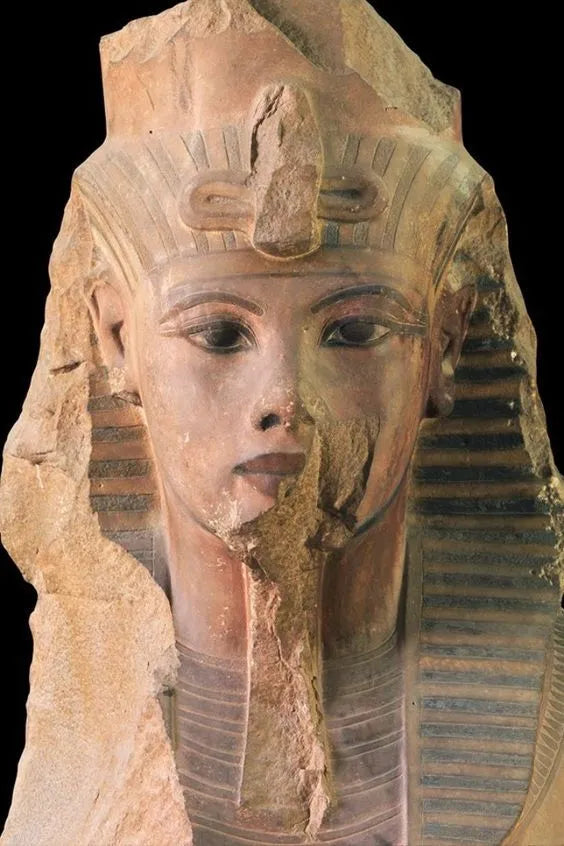
Crafted from quartzite, this statue stands approximately 5 metres tall. Traces of paint still cling to it, offering a glimpse into its original appearance despite damage to the face and missing limbs. Tutankhamun is depicted wearing a traditional kilt, known as a "shendyt" in Ancient Egypt, with a falcon-headed dagger tucked into his waistband. Hieroglyphs spelling out his throne name adorn what seems to be his belt-clip, indicating a possible usurpation by Horemheb. He is adorned with a usekh collar and a nemes headdress adorned with royal blue and yellow (or gold) patterns, reminiscent of his famous death mask.


The other colossal statue of Tutankhamun, also discovered at Medinet Habu, resides at the Oriental Institute Museum of Chicago. This Tutankhamun colossal statue, standing at the same height as it's twin and weighing approximately 6 tons, is the tallest Ancient Egyptian statue in the Western Hemisphere. Crafted from quartzite like its counterpart in Cairo's Egyptian Museum, it is comparatively less damaged. The museum has painstakingly reconstructed the colossal statue using fragments, allowing the king to stand tall over three millennia after his reign. The reconstructed parts include the base, lower legs, arms, beard, and nose.
For more information on the Living Horus Usekh collar and matching Nemes Headdress, click the images below and commission your very own today!


